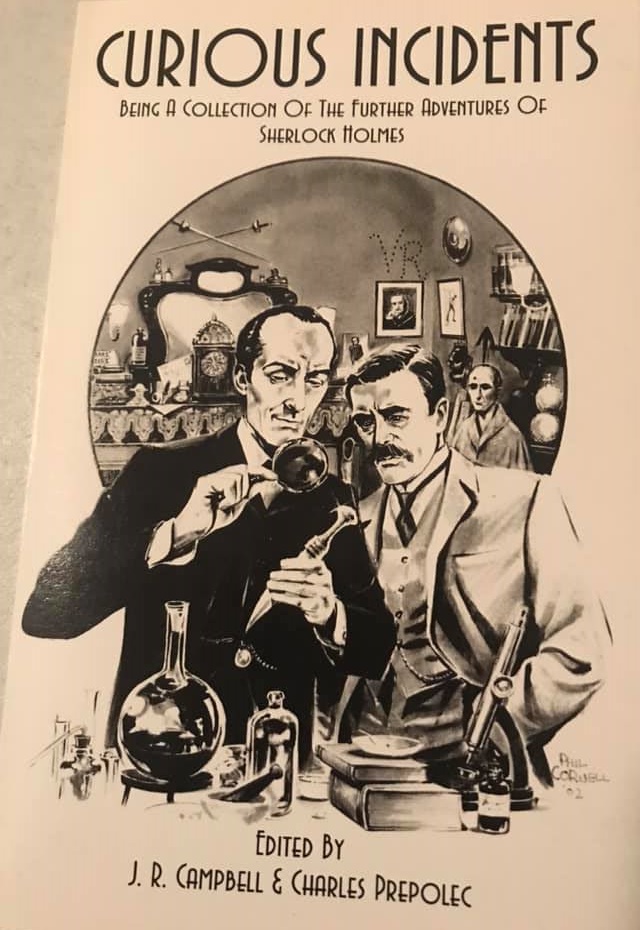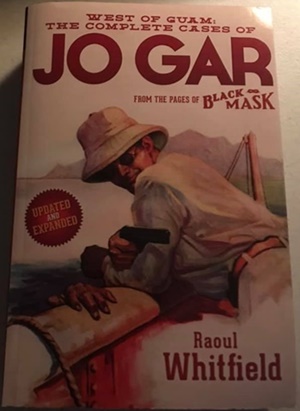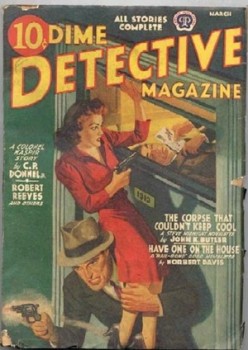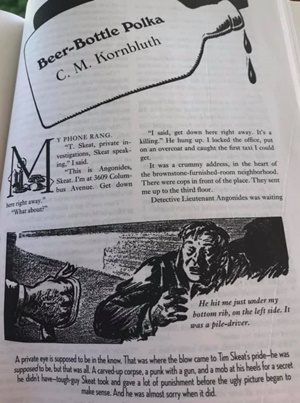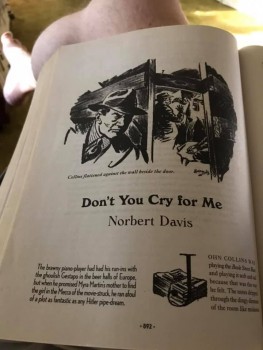A (Black) Gat in the Hand: Johnny Angel (Raft)
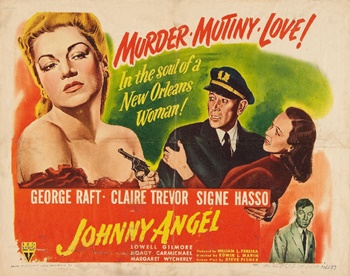 “You’re the second guy I’ve met within hours who seems to think a gat in the hand means a world by the tail.” – Phillip Marlowe in Raymond Chandler’s The Big Sleep
“You’re the second guy I’ve met within hours who seems to think a gat in the hand means a world by the tail.” – Phillip Marlowe in Raymond Chandler’s The Big Sleep
(Gat — Prohibition Era termsp for a gun. Shortened version of Gatling Gun)
This essay on Johnny Angel is not about the song sung by Shelly Fabares; though, I do like it. Instead, it’s a nautical noir starring George Raft, now at RKO after what can only be deemed a disappointing career at Warners. Of course, Raft can only blame himself for that, after passing on High Sierra, The Maltese Falcon, and Double Indemnity. You think his career wouldn’t have gone differently with those classics on his resume? However, he actually did make some solid movies at RKO in the mid-to-late forties, and this is one of them. THERE BE SPOILERS HERE! Look – I’m talking about a 75 year old movie here. If I ruin something for you; well, you had plenty of chances to see it before now. Okay?
Here, Raft plays Johnny Angel – a merchant ship captain who followed his father into the same career. His father has simply disappeared, along with his ship. Johnny takes offense at insinuations his father did something wrong, and is determined to find out what happened. Raft makes a decent civilian skipper, with a stiff walk. As always, he’s the toughest guy in the room, glowering at, and verbally berating, weaker characters. And of course, beating up the bad guys. You know what you’re getting in a Raft movie.
The female co-lead is the completely forgettable Signe Hasso (though she’s third-billed). She had a funny role in George Segal’s The Maltese Falcon spoof, The Black Bird. But I don’t think she brings anything to this movie at all. If this had been a Warners flick, Joan Blondell, or Ann Sheridan, or maybe even Sylvia Sidney, would have made this a better film. Her character, Paulette Girard, knows something about Johnny’s father’s disappearance, and she’s on the run.
However, it’s top-billed Claire Trevor who carries the female load. Trevor was a terrific actress and played a number of fine parts in hardboiled and noir films. She didn’t have much screen time as Baby Face Martin’s syphilitic, hooker ex-girlfriend, but she brought another layer of emotional depth to Bogart’s character, in Dead End. She had just shone opposite Dick Powell’s Philip Marlowe in Murder My Sweet, when she made Johnny Angel. And of course, she won an Oscar for Key Largo.
